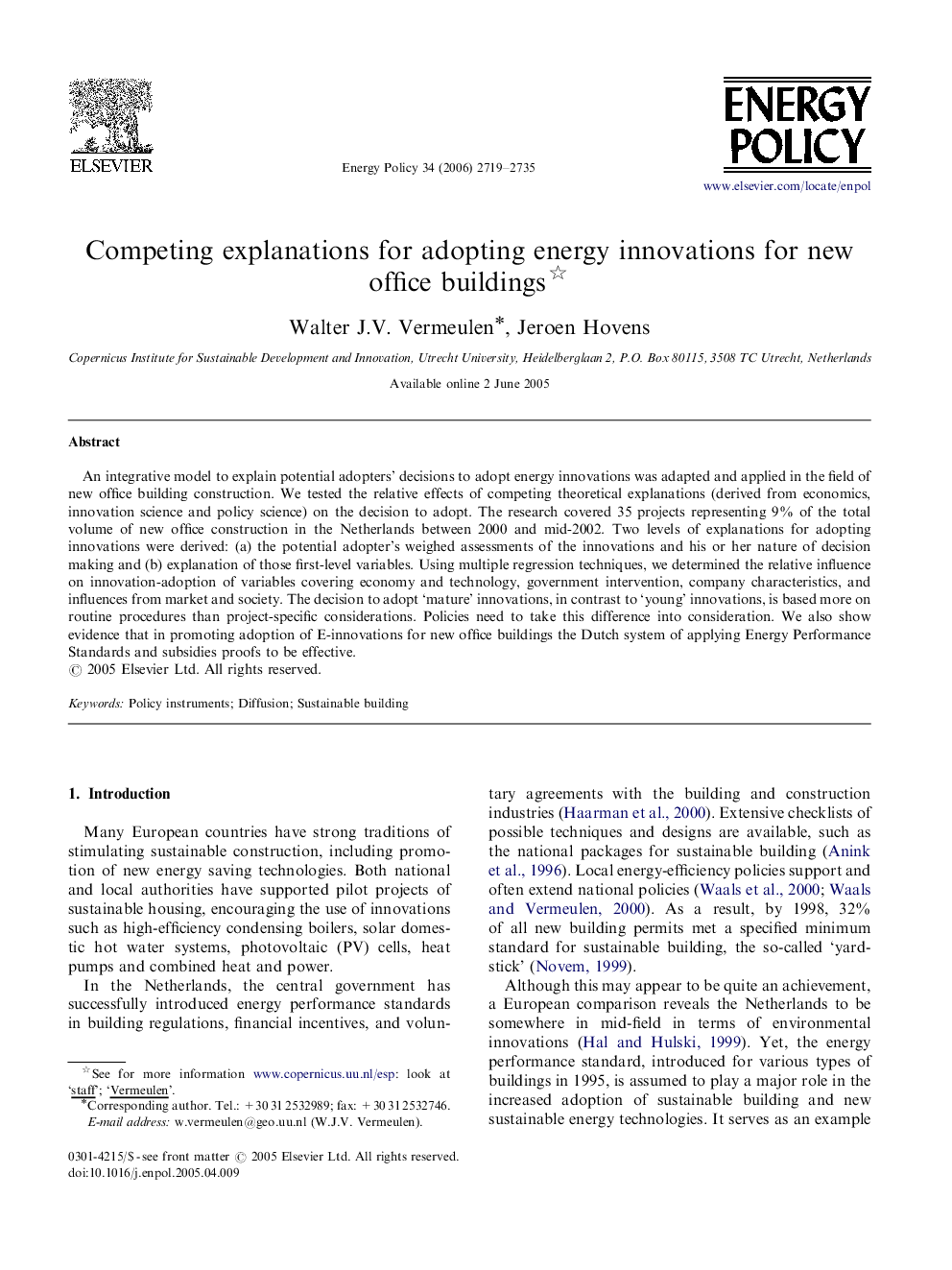| Article ID | Journal | Published Year | Pages | File Type |
|---|---|---|---|---|
| 994648 | Energy Policy | 2006 | 17 Pages |
An integrative model to explain potential adopters’ decisions to adopt energy innovations was adapted and applied in the field of new office building construction. We tested the relative effects of competing theoretical explanations (derived from economics, innovation science and policy science) on the decision to adopt. The research covered 35 projects representing 9% of the total volume of new office construction in the Netherlands between 2000 and mid-2002. Two levels of explanations for adopting innovations were derived: (a) the potential adopter's weighed assessments of the innovations and his or her nature of decision making and (b) explanation of those first-level variables. Using multiple regression techniques, we determined the relative influence on innovation-adoption of variables covering economy and technology, government intervention, company characteristics, and influences from market and society. The decision to adopt ‘mature’ innovations, in contrast to ‘young’ innovations, is based more on routine procedures than project-specific considerations. Policies need to take this difference into consideration. We also show evidence that in promoting adoption of E-innovations for new office buildings the Dutch system of applying Energy Performance Standards and subsidies proofs to be effective.
